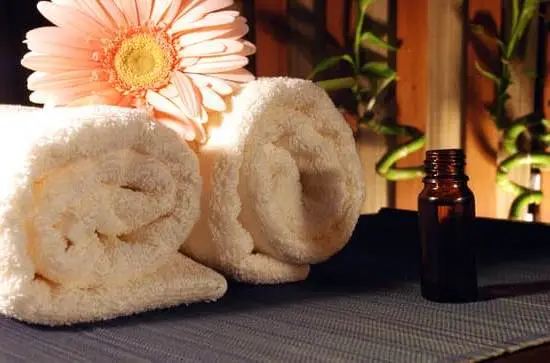Are you curious about how to use aromatherapy oils in labour? Aromatherapy has long been known for its therapeutic benefits, and it can be a valuable tool for managing pain and promoting relaxation during childbirth.
In this article, we will explore the use of aromatherapy oils in labor, including how to choose the right essential oils, safety precautions to consider, and tips on creating customized blends. We’ll also discuss application methods, managing pain and stress, partner involvement, and postpartum aromatherapy practices.
Aromatherapy can offer numerous benefits during labor, from reducing discomfort to enhancing emotional well-being. The use of essential oils can help alleviate stress, anxiety, and pain while creating a soothing atmosphere for the birthing mother. In this introductory section, we will provide an overview of how aromatherapy oils can be used as a natural aid for pain management and relaxation during childbirth.
Choosing the right aromatherapy oils is crucial for ensuring a safe and effective experience during labor. Different essential oils have unique therapeutic properties that can address specific needs and preferences. We’ll discuss the types of essential oils suitable for use during labor, their benefits, and how to select the best ones for individual considerations. Additionally, safety precautions when using aromatherapy oils in labor will be highlighted to ensure a positive experience for both mother and baby.
Choosing the Right Aromatherapy Oils
When using aromatherapy oils in labor, it is essential to choose the right essential oils that are suitable and safe for use during childbirth. There are a variety of essential oils with therapeutic properties that can help with pain management, relaxation, and emotional support during labor. Here are some key considerations when selecting the best aromatherapy oils for labor:
- Lavender: Known for its calming and soothing properties, lavender essential oil is a popular choice for labor as it can help reduce anxiety and promote relaxation. It is also said to have pain-relieving effects, making it beneficial during childbirth.
- Peppermint: Peppermint essential oil is known for its refreshing and invigorating scent, which can be useful for providing a burst of energy during labor. It can also help alleviate nausea and muscle tension, making it a versatile option for childbirth.
- Frankincense: With its grounding and calming properties, frankincense essential oil can help create a serene atmosphere during labor and promote emotional well-being. It is often used for meditation and relaxation, which can be beneficial for mothers during childbirth.
It is important to note that not all essential oils are safe for use during labor, as some may have stimulating or irritating effects that could be inappropriate for the birthing process. Additionally, individual preferences and sensitivities should be taken into account when choosing aromatherapy oils for labor.
When selecting aromatherapy oils for childbirth, it is recommended to consult with a qualified aromatherapist or healthcare professional who can provide personalized recommendations based on the mother’s specific needs and medical history. This will help ensure the safe and effective use of aromatherapy oils during labor while prioritizing the well-being of both the mother and baby.
Safety Precautions
When using aromatherapy oils during labor, it’s crucial to prioritize safety to ensure both the mother and baby’s well-being. Here are some important safety considerations to keep in mind:
1. Dilution Ratios: Essential oils are highly concentrated and should always be diluted before use during labor. The general rule of thumb is to dilute 1-2 drops of essential oil with 1 tablespoon of carrier oil, such as almond or coconut oil. This helps reduce the risk of skin irritation or sensitization.
2. Potential Allergic Reactions: Before using any essential oil during labor, it’s essential to perform a patch test on a small area of skin to check for any allergic reactions. Some common allergens found in essential oils include lavender, chamomile, and citrus oils. If the mother has a history of allergies, it’s best to consult with a healthcare professional before using aromatherapy oils.
3. Guidelines for Inhalation and Topical Application: When using aromatherapy oils for inhalation, it’s important to ensure proper ventilation in the birthing environment to prevent overwhelming the senses. For topical application, gentle massage techniques should be used to promote relaxation and comfort for the mother. Additionally, essential oils should never be ingested during labor.
Overall, understanding these safety precautions is crucial in ensuring a positive and safe experience when using aromatherapy oils during labor. By following these guidelines, expecting mothers can harness the therapeutic benefits of essential oils while minimizing potential risks for themselves and their babies.
Creating an Aromatherapy Blend
When creating an aromatherapy blend for use during labor, it is essential to consider the specific needs and preferences of the mother. Each individual may respond differently to various essential oils, so it is important to tailor the blend to suit her comfort and well-being. Here are some step-by-step instructions on how to create a customized aromatherapy blend for use during labor.
- Selecting Essential Oils: Start by choosing essential oils known for their calming, pain-relieving, and uplifting properties. Lavender, chamomile, and frankincense are popular choices for relaxation, while clary sage and peppermint are often used for their potential pain management benefits during childbirth. Consider the mother’s personal scent preferences and any known sensitivities or allergies when selecting essential oils.
- Choosing Carrier Oils: After choosing the essential oils for the blend, it is important to select an appropriate carrier oil. Carrier oils like sweet almond oil, coconut oil, or jojoba oil can help dilute the essential oils and ensure they are safe for topical application. Consider the texture of the carrier oil and its absorption rate when creating a massage blend for use during labor.
- Blending Essential Oils: Once you have selected the essential oils and carrier oils for the blend, carefully mix them in appropriate proportions. It is crucial to follow recommended dilution ratios to avoid skin irritation or allergic reactions. Generally, a 2-3% dilution (or about 12-18 drops of essential oil per ounce of carrier oil) is considered safe for adult use.
By following these steps, you can create a personalized aromatherapy blend tailored to support relaxation, pain management, and emotional well-being during labor. Whether used for massage or diffusion in the birthing environment, a carefully crafted aromatherapy blend can provide comfort and support throughout the childbirth process.
Application Methods
Aromatherapy oils can be used in various ways during labor to help with pain management, relaxation, and emotional well-being. One of the most popular methods is massage, which involves diluting essential oils with a carrier oil and applying them to the skin through gentle massage.
This can help ease discomfort, promote relaxation, and provide emotional support for the mother during labor. Another effective method is inhalation, where the aroma of essential oils is inhaled to stimulate the brain and promote a sense of calm and well-being.
Using aromatherapy oils through diffusion is also a common practice during labor, as it can help create a soothing atmosphere in the birthing environment. Diffusers disperse essential oil molecules into the air, allowing them to be inhaled by the mother and her birth partner. This method can be particularly beneficial for promoting relaxation, reducing stress, and providing support for both physical and emotional needs during childbirth.
When using aromatherapy oils during labor, it’s important to consider safety precautions and guidelines for each application method. Essential oils should always be properly diluted before use, especially when applying them directly to the skin or using them in a diffuser. Additionally, ensuring proper ventilation in the birthing environment when using aromatherapy through diffusion is crucial to prevent overwhelming the senses of those present.
How to Use Aromatherapy Oils in Labour
| Application Method | Description |
|---|---|
| Massage | Dilute essential oils with carrier oil and apply through gentle massage for pain management and emotional support. |
| Inhalation | Inhale essential oil aroma to stimulate the brain for calming effects and emotional well-being during labor. |
| Diffusion | Use a diffuser to disperse essential oil molecules into the air to create a calming atmosphere in the birthing environment. |
Managing Pain and Stress
Aromatherapy has been recognized as a complementary therapy that can help manage pain and reduce stress during labor. When used correctly, essential oils can provide a natural way to promote relaxation and emotional well-being throughout the birthing process. By understanding which specific essential oils are effective for alleviating labor pain and reducing stress, along with strategies for their use, mothers can benefit from the advantages of aromatherapy during childbirth.
One of the most popular essential oils for managing pain during labor is lavender oil. Lavender oil is known for its calming and soothing properties, making it an excellent choice for easing discomfort and promoting relaxation.
Similarly, clary sage oil has been used traditionally to support uterine contractions and relieve tension, making it valuable in addressing both physical and emotional challenges during childbirth. Additionally, peppermint oil can be effective in reducing nausea and providing an energizing aroma that helps combat fatigue during the birthing process.
Another effective strategy for using aromatherapy to alleviate labor pain and reduce stress is through massage. Aromatherapy massage involves diluting essential oils with a carrier oil and applying them directly to the skin through gentle massage techniques.
This method allows for direct absorption of the essential oils into the bloodstream, providing targeted relief from discomfort while also promoting emotional well-being. In addition to massage, inhalation of aromatherapy oils through diffusers or inhalers can offer continuous exposure to therapeutic scents, helping women remain calm and focused throughout labor.
Partner involvement in using aromatherapy oils during labor is crucial for ensuring a supportive environment. Birth partners can play an active role in administering aromatherapy blends through gentle massages or by coordinating the use of diffusers to create a calming atmosphere. Emotional support from partners combined with the benefits of aromatherapy can significantly aid in managing pain and promoting relaxation during childbirth.
Key Data:
- Lavender oil is effective at calming anxiety and reducing discomfort.
- Clary sage oil supports uterine contractions.
- Peppermint oil helps combat nausea and fatigue.
- Aromatherapy massage provides targeted relief while promoting emotional well-being.
- Partner involvement in using aromatherapy oils contributes to a supportive birthing environment.
| Essential Oil | Benefits |
|---|---|
| Lavender Oil | Calming anxiety & reducing discomfort |
| Clary Sage Oil | Supports uterine contractions |
| Peppermint Oil | Combatting nausea & providing an energizing aroma |
Partner Involvement
During the labor and delivery process, having a supportive birth partner can make a significant difference in the overall experience for the mother. In the context of using aromatherapy oils during labor, the role of the birth partner becomes even more crucial. The birth partner can actively participate in creating a calming and soothing atmosphere through the use of aromatherapy oils, assist with their application, and provide emotional support to the mother.
Assisting With Application
The birth partner can be actively involved in applying aromatherapy oils during labor. This may involve massaging the mother’s back or feet with a pre-prepared blend of essential oils that are known for their relaxation and pain-relief properties. Additionally, they can help create a calming environment by diffusing essential oils using a diffuser or reed diffuser. By assisting with application, the birth partner is not only providing physical comfort but also participating in the overall birthing experience.
Providing Emotional Support
Labor and childbirth can be an emotionally intense experience for both the mother and her birth partner. Aromatherapy oils can play a significant role in promoting emotional well-being, reducing stress, and creating a sense of calmness. The birth partner can support the mother emotionally by being attentive to her needs, offering words of encouragement and reassurance, and utilizing calming aromatherapy blends to help manage any anxiety or tension that may arise during labor.
Creating a Comfortable Atmosphere
The presence of comforting scents from aromatherapy oils can contribute to creating a comfortable atmosphere in the birthing environment. The birth partner can take an active role in setting up this atmosphere by ensuring that essential oils are properly diffused throughout the room or through massage techniques. Additionally, they can provide other forms of comfort such as soft music, dim lighting, and maintaining a peaceful ambiance to enhance the effectiveness of aromatherapy during labor.
By actively participating in these ways, the birth partner plays an integral role in using aromatherapy oils during labor-ultimately contributing to making it a positive and empowering experience for both themselves and the mother-to-be.
Postpartum Aromatherapy
In conclusion, aromatherapy can be a valuable and effective tool for women during labor and the postpartum period. By carefully choosing the right essential oils and creating customized blends, mothers can experience the benefits of pain management, relaxation, and emotional support during childbirth. Safety precautions should always be considered when using aromatherapy oils in labor, including proper dilution ratios, potential allergic reactions, and guidelines for application methods.
After giving birth, aromatherapy continues to offer benefits for recovery, relaxation, and bonding with the newborn. Aromatherapy practices such as massage or diffusion can help promote physical healing, reduce stress and anxiety levels in new mothers, and create a calm atmosphere for both mother and baby. Additionally, essential oils can also aid in promoting better sleep quality and boosting mood during the postpartum period.
It’s important to note that while aromatherapy can be a beneficial complementary practice during labor and postpartum care, it should not replace standard medical care or advice from healthcare professionals. However, when used thoughtfully and safely, aromatherapy can be a wonderful addition to a mother’s birthing experience and postpartum journey.
Ultimately, every woman’s needs are unique so it is advisable to consult with a qualified aromatherapist or healthcare provider on how to use aromatherapy oils in labor effectively according to individual circumstances.
Frequently Asked Questions
How Do You Use Essential Oils During Labor?
Essential oils can be used during labor in a few different ways. Some women choose to inhale the oils directly from the bottle or from a cloth, while others may add a few drops to a diffuser to fill the room with the scent.
Another option is to mix the essential oil with a carrier oil and apply it to specific areas like the lower back or abdomen for pain relief.
How Do You Use Aromatherapy Oils When Pregnant?
When pregnant, it’s important to use aromatherapy oils cautiously. Some essential oils are not safe during pregnancy, so it’s crucial to do your research before using them.
Diluting essential oils with a carrier oil and using them in a diffuser are generally considered safe methods for pregnant women to benefit from aromatherapy, but always consult with a healthcare provider first.
What Are the Delivery Methods for Aromatherapy?
There are several delivery methods for aromatherapy, each offering unique benefits. Inhaling essential oils is one common method, whether directly from the bottle or via a diffuser.
Topical application involves diluting essential oils with a carrier oil and applying them to the skin, while some individuals choose to add drops of essential oils to their bath water for a relaxing experience. Oral consumption of essential oils is also an option but should be done under the guidance of a qualified professional due to safety concerns.

Are you looking for a natural way to improve your health and wellbeing?
If so, aromatherapy may be the answer for you.





